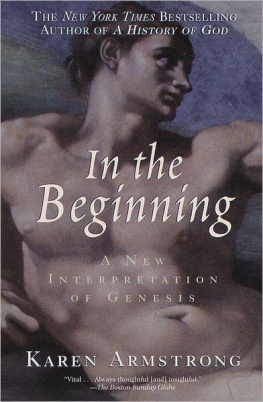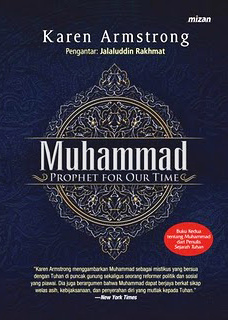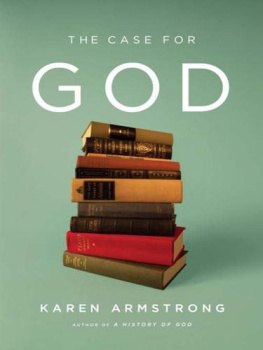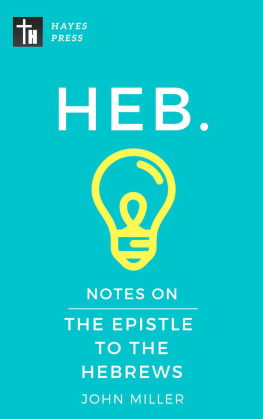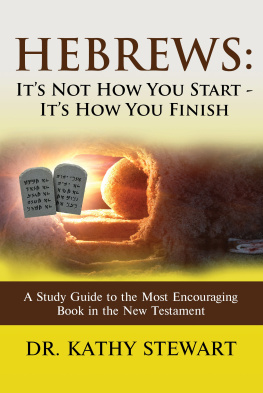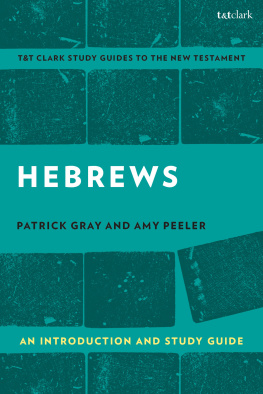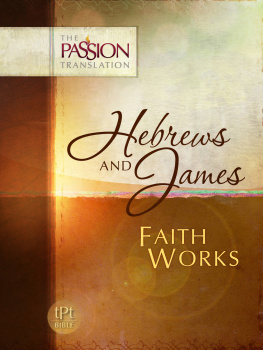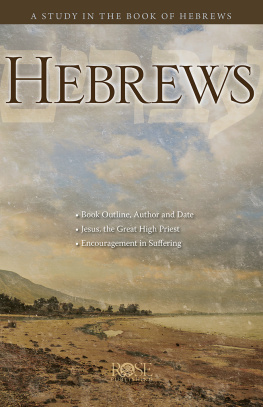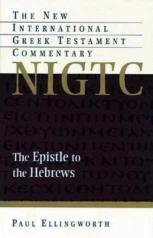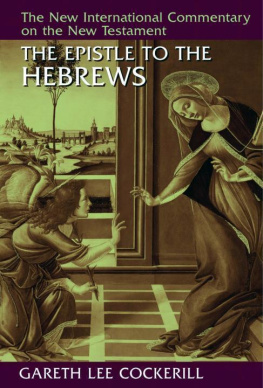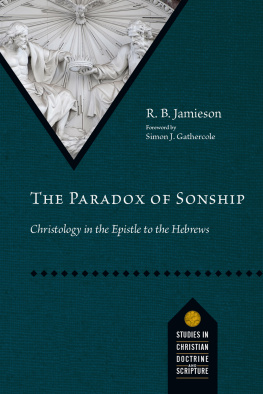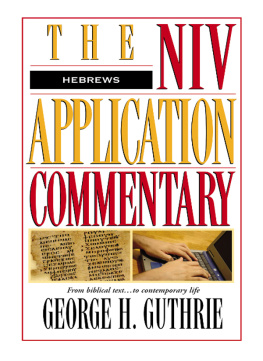Karen Armstrong - The Epistle of Paul the Apostle to the Hebrews
Here you can read online Karen Armstrong - The Epistle of Paul the Apostle to the Hebrews full text of the book (entire story) in english for free. Download pdf and epub, get meaning, cover and reviews about this ebook. year: 1999, publisher: Canongate Books, genre: Religion. Description of the work, (preface) as well as reviews are available. Best literature library LitArk.com created for fans of good reading and offers a wide selection of genres:
Romance novel
Science fiction
Adventure
Detective
Science
History
Home and family
Prose
Art
Politics
Computer
Non-fiction
Religion
Business
Children
Humor
Choose a favorite category and find really read worthwhile books. Enjoy immersion in the world of imagination, feel the emotions of the characters or learn something new for yourself, make an fascinating discovery.
- Book:The Epistle of Paul the Apostle to the Hebrews
- Author:
- Publisher:Canongate Books
- Genre:
- Year:1999
- Rating:3 / 5
- Favourites:Add to favourites
- Your mark:
- 60
- 1
- 2
- 3
- 4
- 5
The Epistle of Paul the Apostle to the Hebrews: summary, description and annotation
We offer to read an annotation, description, summary or preface (depends on what the author of the book "The Epistle of Paul the Apostle to the Hebrews" wrote himself). If you haven't found the necessary information about the book — write in the comments, we will try to find it.
Hebrews marks a parting of the ways for Jews and Christians of the first century. It makes a case for the superiority of the new Christian faith over old Hebrew orthodoxy and draws on the Old Testament for precedents for Jesuss ministry and to paint a picture of Jesus.
The Epistle of Paul the Apostle to the Hebrews — read online for free the complete book (whole text) full work
Below is the text of the book, divided by pages. System saving the place of the last page read, allows you to conveniently read the book "The Epistle of Paul the Apostle to the Hebrews" online for free, without having to search again every time where you left off. Put a bookmark, and you can go to the page where you finished reading at any time.
Font size:
Interval:
Bookmark:
The Authorised King James Version of the Bible, translated between 160311, coincided with an extraordinary flowering of English literature. This version, more than any other, and possibly more than any other work in history, has had an influence in shaping the language we speak and write today.
Twenty-four of the eighty original books of the King James Bible are brought to you in this series. They encompass categories as diverse as history, philosophy, law, poetry and fiction. Each Pocket Canon also has its own introduction, specially commissioned from an impressive range of writers, to provide a personal interpretation of the text and explore its contemporary relevance.
Karen Armstrongs first book, the best-selling Through the Narrow Gate (1981), described her seven years as a nun in aRoman Catholic order. She has published numerous books A History of God, which has been translated into thirty languages, A History of Jerusalem and In the Beginning: A New Reading of Genesis.
We are currently living in a time of religious transition. In many of the countries of Western Europe, atheism is on the increase, and the churches are emptying, being converted into art galleries, restaurants and warehouses. Even in the United States, where over ninety per cent of the population claim to believe in God, people are seeking new ways of thinking about religion and practising their faith. In our dramatically altered circumstances, the old symbols that once introduced people to a sacred dimension of existence no longer function so effectively. In the Christian world, some people are either abandoning the old forms, or trying to reinterpret such doctrines as the incarnation or the atonement in a way that makes sense to them at the beginning of the third Christian millennium.
The author of The Epistle to the Hebrews was writing at another pivotal moment in religious history, when the traditional symbols of the divine in Judaism the Law of Moses, the Jerusalem Temple, and the old covenant between God and the people of Israel seemed increasingly unsatisfactory to a significant number of Jews who were also struggling to find new ways of being religious. During the first century CE , there were a number of different sects, which were attempting to reinterpret Judaism. The most popular of these sects was that of the Pharisees, who based their spirituality on the Law; they were the most progressive and innovative Jews of the period and wanted to bring the Law up to date, by amending the Law as found in scripture by developing an oral or customal law, based on the actual practice of Jews. They enjoyed the support of most of the ordinary people. The Saducees were mostly members of the aristocratic and priestly classes; they were traditionalists, who wanted to stick to the letter of the Law as found in the Bible; their piety centred on the ancient cult in the Temple. The Essenes were more radical; they believed that the End of Days was nigh and that the Judaism of their day was corrupt, and had withdrawn from mainstream society to await the final battle between the powers of good and evil; some had retreated to Qumran beside the Dead Sea, and lived in a quasi-monastic community.
Christianity began as yet another of these Jewish sects. Until St Paul took the new faith to the gentile world, the original disciples of Jesus had no intention of founding a new religion. They believed that Jesus had been the Messiah and that he would shortly return in glory to inaugurate Gods kingdom. They observed the Law and worshipped daily in the Temple, were regarded as devout and legitimate Jews, and were not eager to admit gentiles into their sect. The author of Hebrews was writing to a group of these Jewish Christians, but he was trying to persuade them to be more radical. He was almost certainly not St Paul, but was probably Pauls contemporary, writing during the 60s, some thirty years after Jesuss death. The Temple, whose rites he describes in such detail and which was destroyed by the Romans in 70 CE , was obviously still standing, but our author, like other Jews at this time, no longer felt that its rites and imagery yielded access to God. He and the Jewish Christians to whom he was writing were in a stage of transition; they were trying to decide what Jesus had meant to them and what his function was in their religious life. The recipients of his letter had various theories, but their roots were still in Judaism, whereas our author was beginning to break away from the traditional Jewish faith, and develop something new.
Our author is aware that he is being controversial, and that many of his readers still felt comfortable with the Temple liturgy. But he was not alone in discovering that these ancient rites, which had been profoundly satisfying to Jews for centuries and which had been crucial to their spiritual life, no longer spoke to him of God. The Qumran sect would have nothing whatever to do with the Temple; they believed that their community constituted a spiritual Temple and that when the Messiah returned at the End of Days, he would build a new Temple, not made by human hands but built miraculously by God himself. They denounced the Jerusalem priests as wicked and sinful, and looked forward to the arrival of a Messiah who would be a perfect priest of the House of Aaron. They clearly felt so uncomfortable with the Temple liturgy that they condemned it as perverse. The Pharisees were less extreme. They continued to worship in the Temple, but were also beginning to teach that charity and acts of loving kindness were just as effective a means of expiating sin as the old animal sacrifices. The loss of the Temple in 70 CE was a devastating blow, but Jews had already begun to retreat from it, and were thus able to make the transition to rabbinic Judaism with the minimum of fuss, encountering the divine presence in the sacred text of the Law rather than in a sacred building.
The author of Hebrews, like other Jewish Christians, shared many of the concerns of the Pharisees and the Essenes; like them, he was trying to find a new way to be Jewish, which put Jesus, the Messiah, at the centre of the picture instead of the Law and the Temple. The Temple liturgy seems to have died on him, and now left him cold. He was especially perturbed by the fact that the Jewish priests had to offer those sacrifices continually, over and over again, year by year, and all to no avail, for these rituals can never take away sins (10:1,11). He felt the same kind of frustration with the Temple as St Paul experienced about the Law, which, far from liberating Paul from his sins, had only made him more conscious of his sinfulness (Romans 7). Where the Pharisees and the Essenes found God in the Law and the sacred community, respectively, these Jewish Christians were making Jesus a symbol which brought them into the divine presence.
We should not underestimate the magnitude of this change. In almost every civilization in the ancient world, the Temple was one of the chief symbols of the divine. Indeed, religion was inconceivable without temple worship and animal sacrifice. When those Jews who had been deported to Babylon by Nebuchadnezzar in 586 BCE , when their Temple had been destroyed for the first time, asked how they could sing the Lords song in an alien land (Psalm 137:4), they were not simply being maudlin or nostalgic about their ruined Temple on Mount Zion in Jerusalem. They were voicing a real theological difficulty. A deity was inaccessible to his worshippers if he did not have a shrine. Whereas today people feel they can encounter God and pray to him wherever they happen to be (in a field or a mountain-top, as well as a church), this was not so in the ancient world. A god could only meet his devotees in a place that he had chosen. The Temple was a replica of his home in the divine world, which mysteriously made him present here below. In premodern religion, the reproduction contained something of the original archetype and a symbol was inseparable from the spiritual entity to which it pointed. The effect of this was similar to the way the son of a dead friend brings the father into the room with him, because he reminds us physically of the deceased, and, at the same time, makes us feel his absence more acutely. The author of
Font size:
Interval:
Bookmark:
Similar books «The Epistle of Paul the Apostle to the Hebrews»
Look at similar books to The Epistle of Paul the Apostle to the Hebrews. We have selected literature similar in name and meaning in the hope of providing readers with more options to find new, interesting, not yet read works.
Discussion, reviews of the book The Epistle of Paul the Apostle to the Hebrews and just readers' own opinions. Leave your comments, write what you think about the work, its meaning or the main characters. Specify what exactly you liked and what you didn't like, and why you think so.


